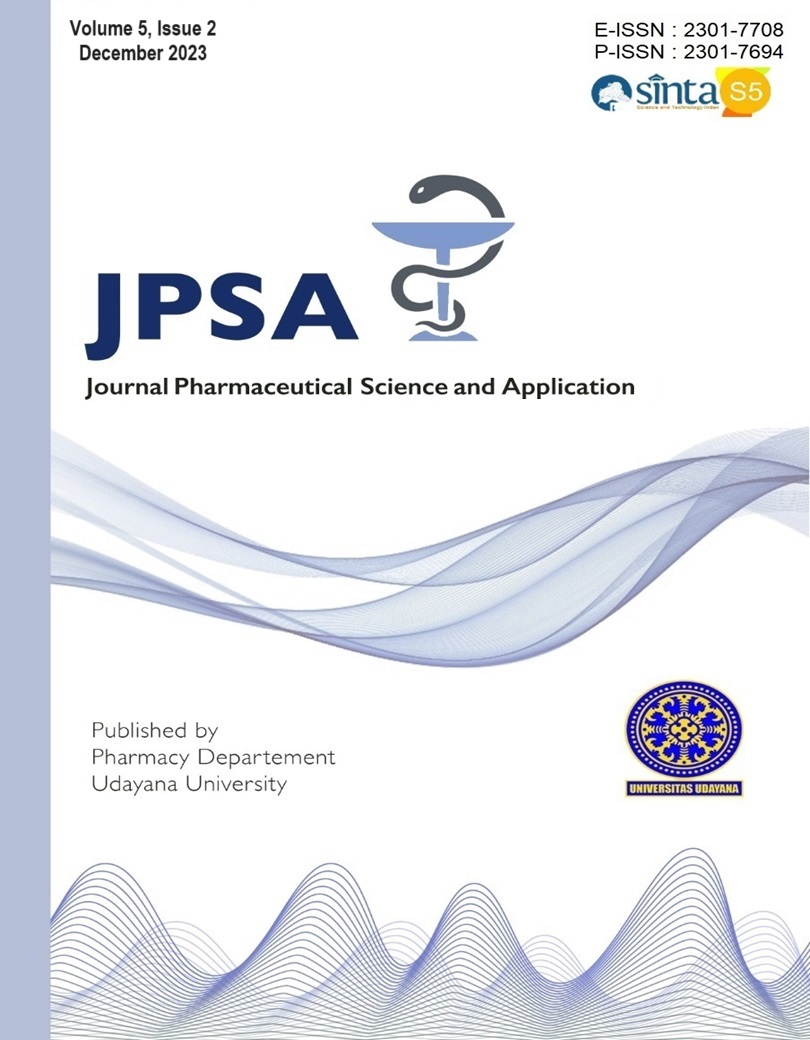SYNERGISTIC EFFECT OF CURCUMA XANTHORRHIZA AND PHYSALIS ANGULATA EXTRACTS AS ANTIOXIDANTS AGAINST DPPH RADICALS
Abstract
Background: As a single extract, Curcuma xanthorrhiza and Physalis angulata are known to have antioxidant activity. However, the interaction effect of antioxidants in suppressing DPPH (2,2-difenil-1-pikrilhidrazil) radicals that arise in these two combinations of plant extracts is not yet known. In this study, the combination of these two plants was investigated for their antioxidant properties and synergistic effects. Objective: This study aims to determine the effect of the combination of Curcuma xanthorrhiza and Physalis angulata as antioxidants and the interactions they cause. Methods: The rhizomes of Curcuma xanthorrhiza and the herb Physalis angulata were extracted separately with ethanol. After evaporation, the crude xtract was tested individually to obtain the IC50 value. Based on the IC50 value of each extract, 9 combination variations were made and the combination index (CI) value was calculated to determine the resulting interaction effect. Result: The antioxidant activity of Curcuma xanthorrhiza IC50 extract is 51.015 ppm, higher than Physalis angulata IC50 extract which is 90.488 ppm. The CI value observed in the combination of extracts in all combinations had a CI value <1. Conclusion: This research shows that the combination of Curcuma xanthorrhiza rhizome extract and Physalis angulata herb has synergistic antioxidant properties.
Keywords: Combination; Synergis; Antioxidant; Combination Index
Downloads

This work is licensed under a Creative Commons Attribution 4.0 International License.
Authors who publish with this journal agree to the following terms:
Authors retain copyright and grant the journal right of first publication with the work simultaneously licensed under a Creative Commons Attribution License that allows others to share the work with an acknowledgment of the work's authorship and initial publication in this journal.
Authors are able to enter into separate, additional contractual arrangements for the non-exclusive distribution of the journal's published version of the work (e.g., post it to an institutional repository or publish it in a book), with an acknowledgment of its initial publication in this journal.
Authors are permitted and encouraged to post their work online (e.g., in institutional repositories or on their website) prior to and during the submission process, as it can lead to productive exchanges, as well as earlier and greater citation of published work. (See The Effect of Open Access).

This work is licensed under a Creative Commons Attribution 4.0 International License.


 HOME
HOME
















